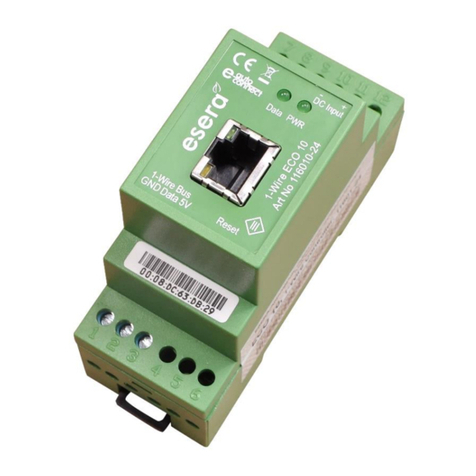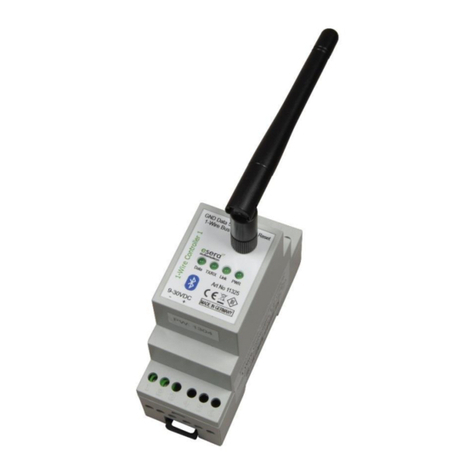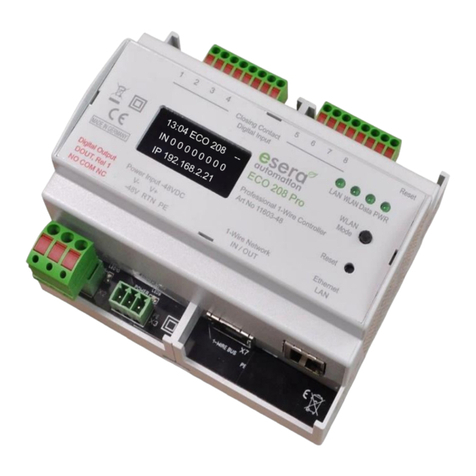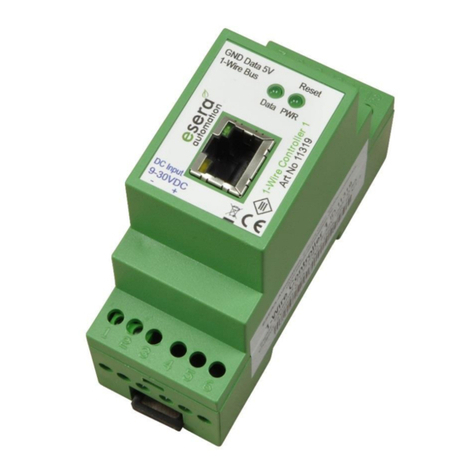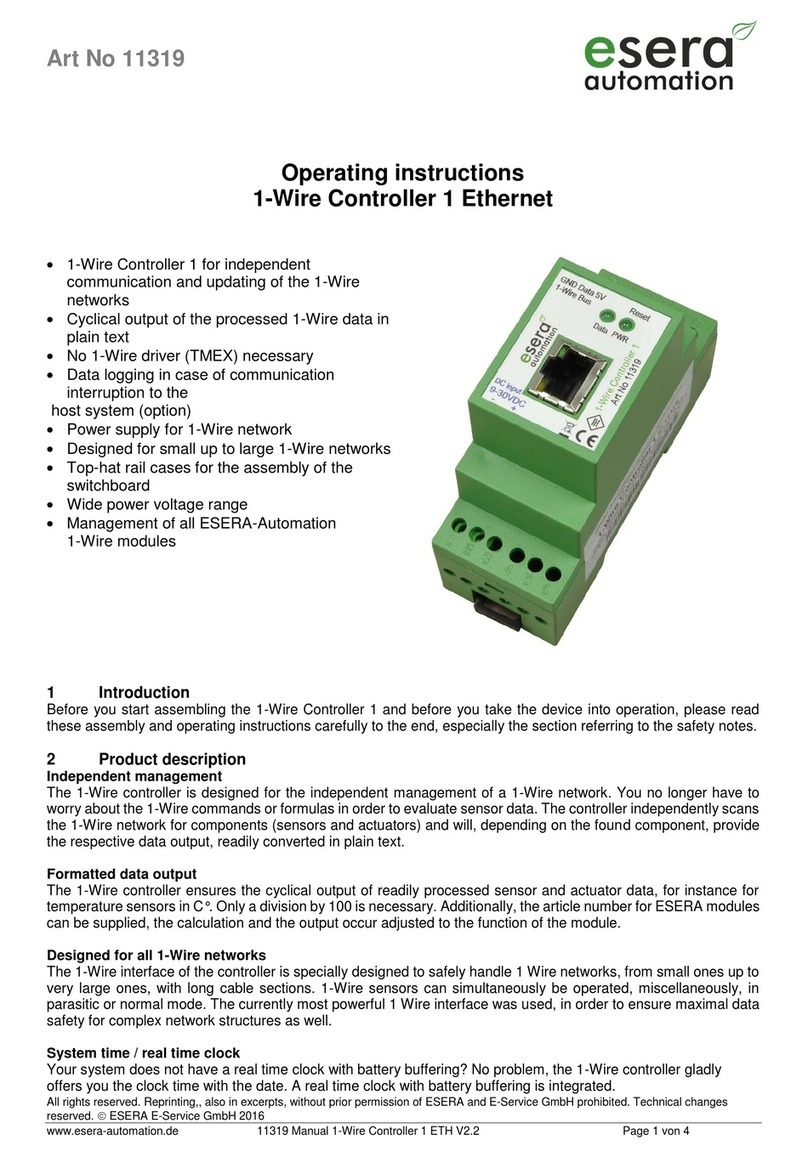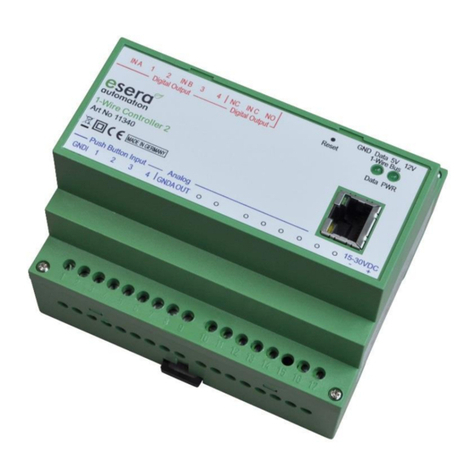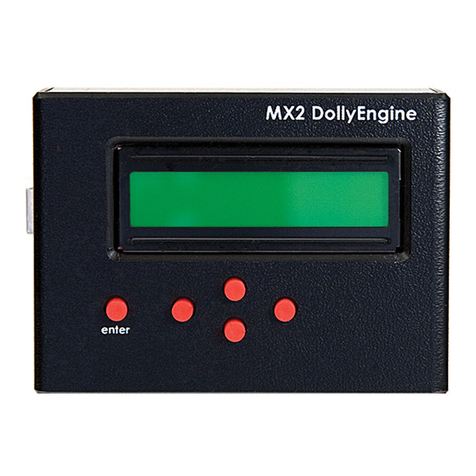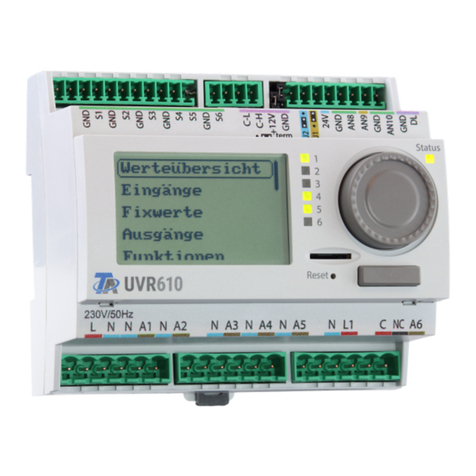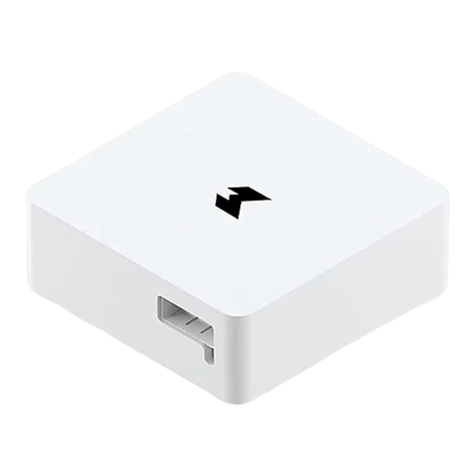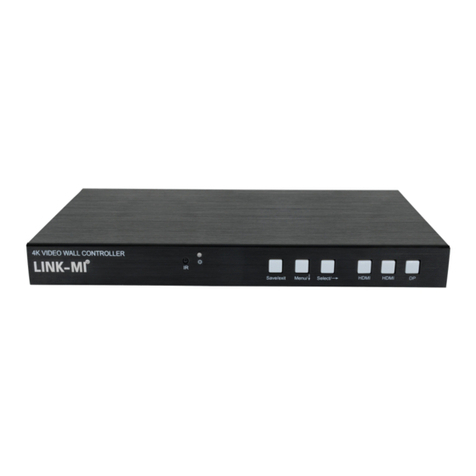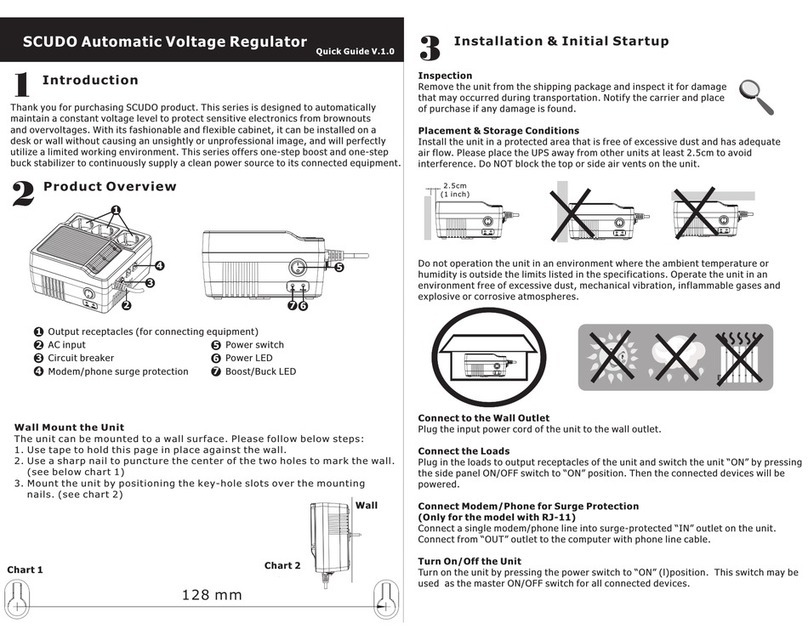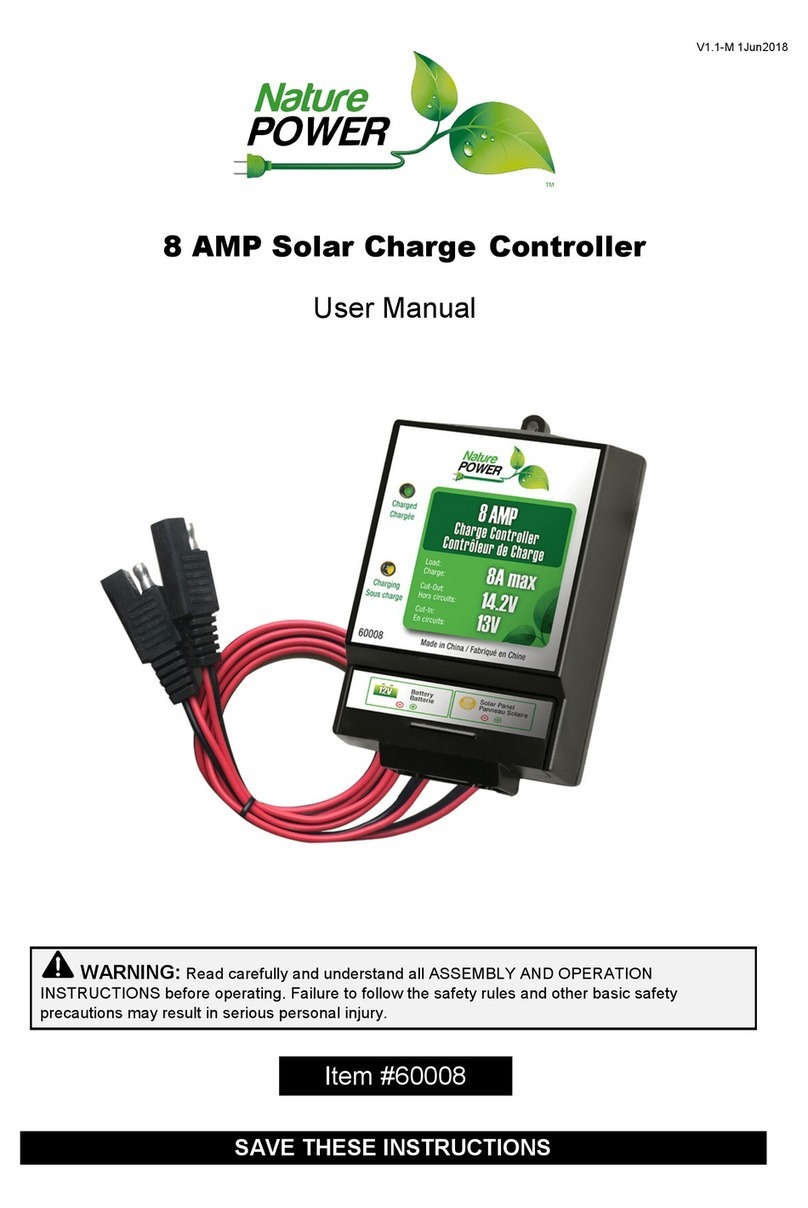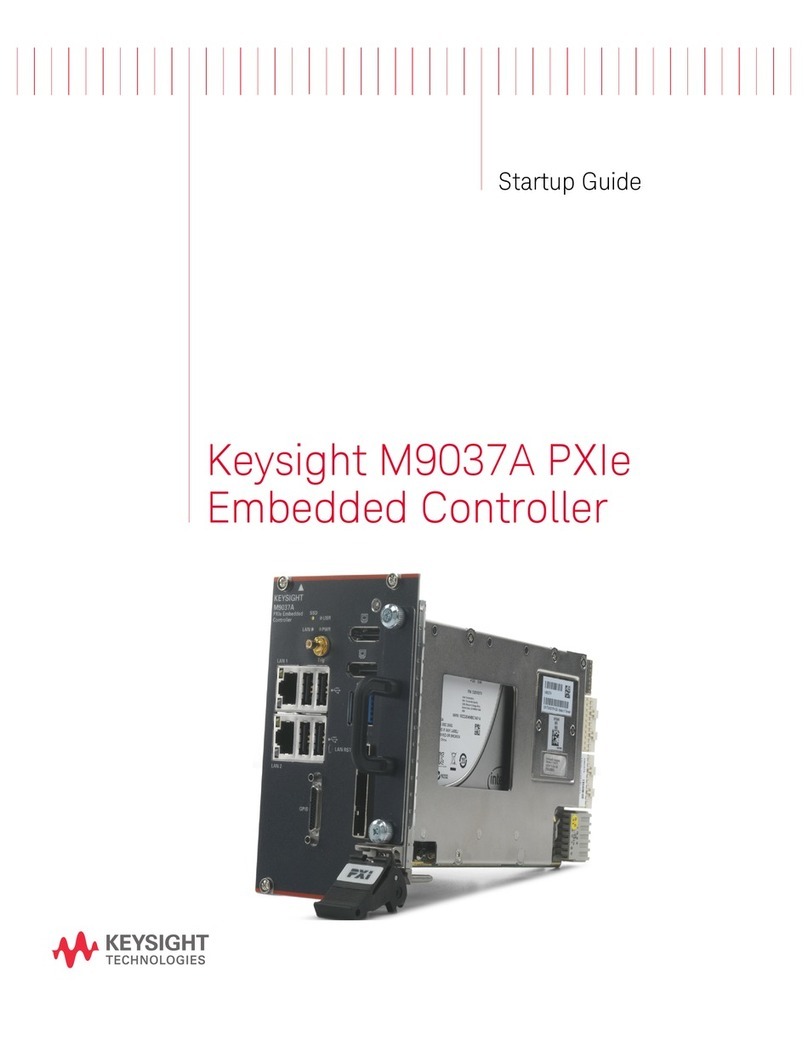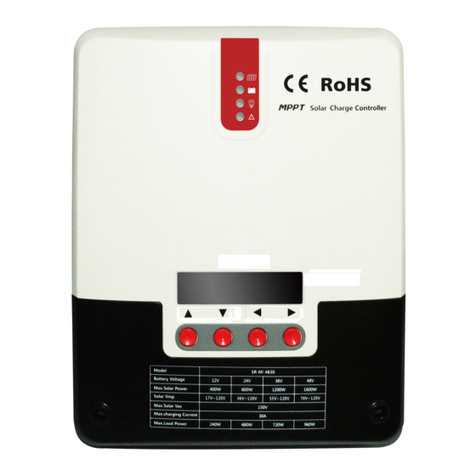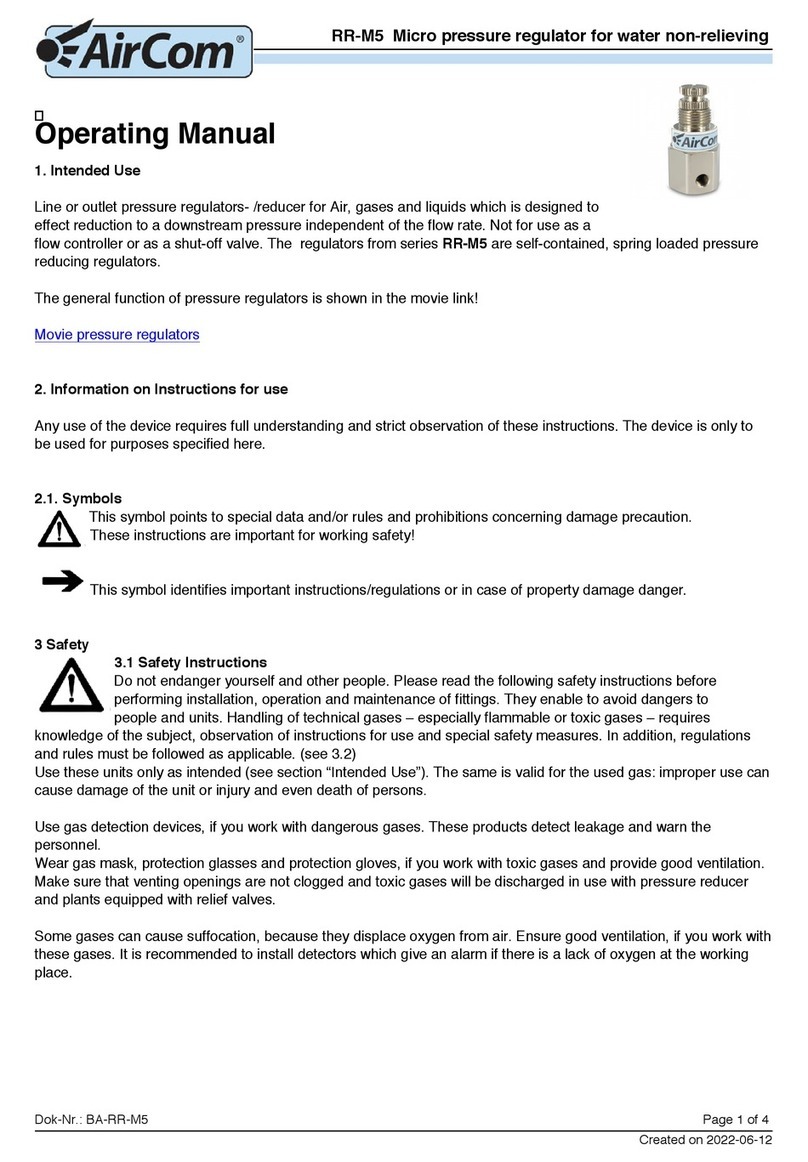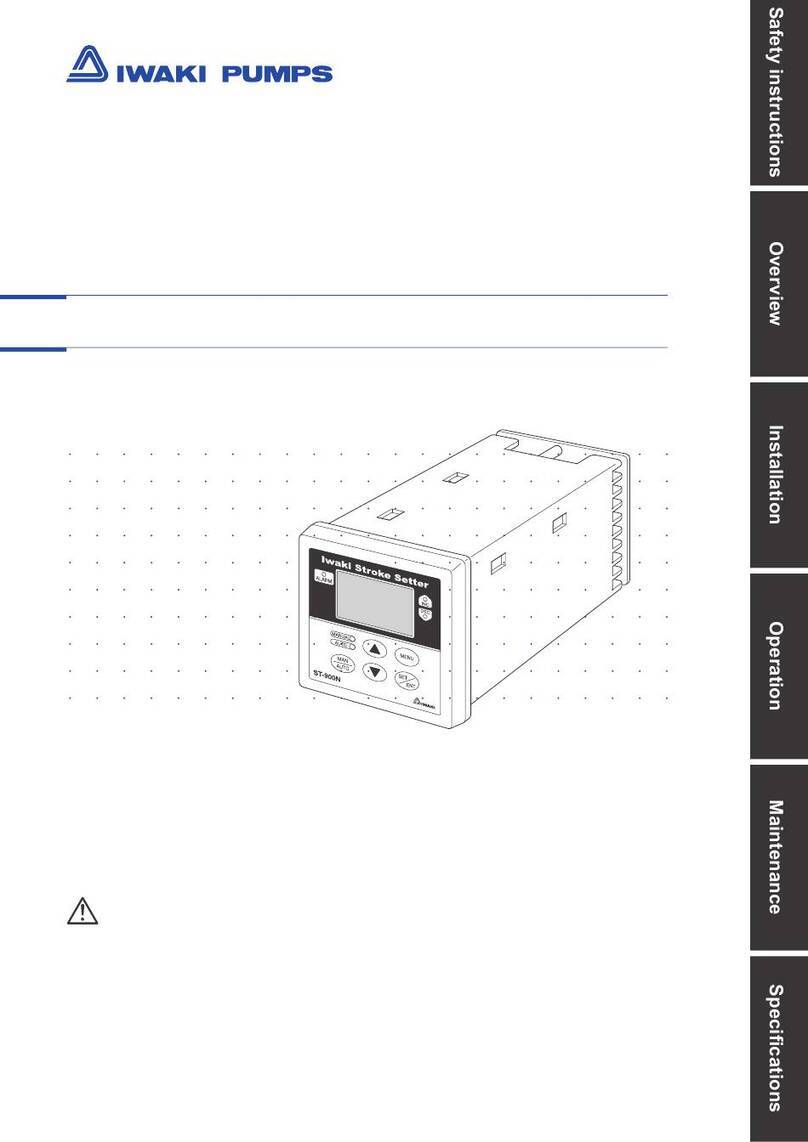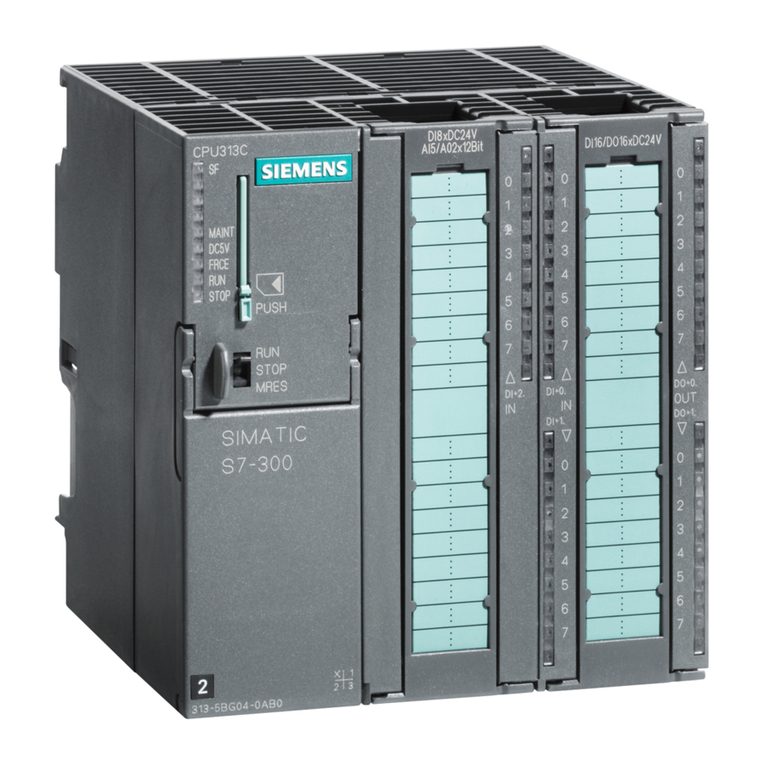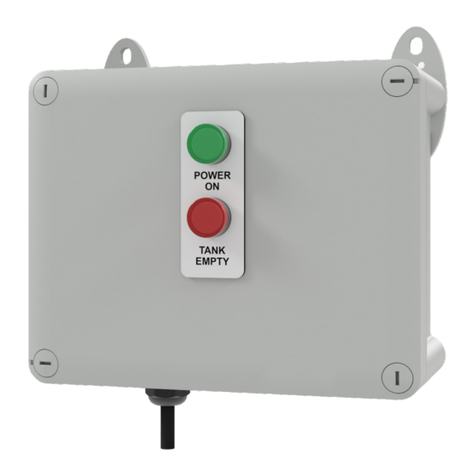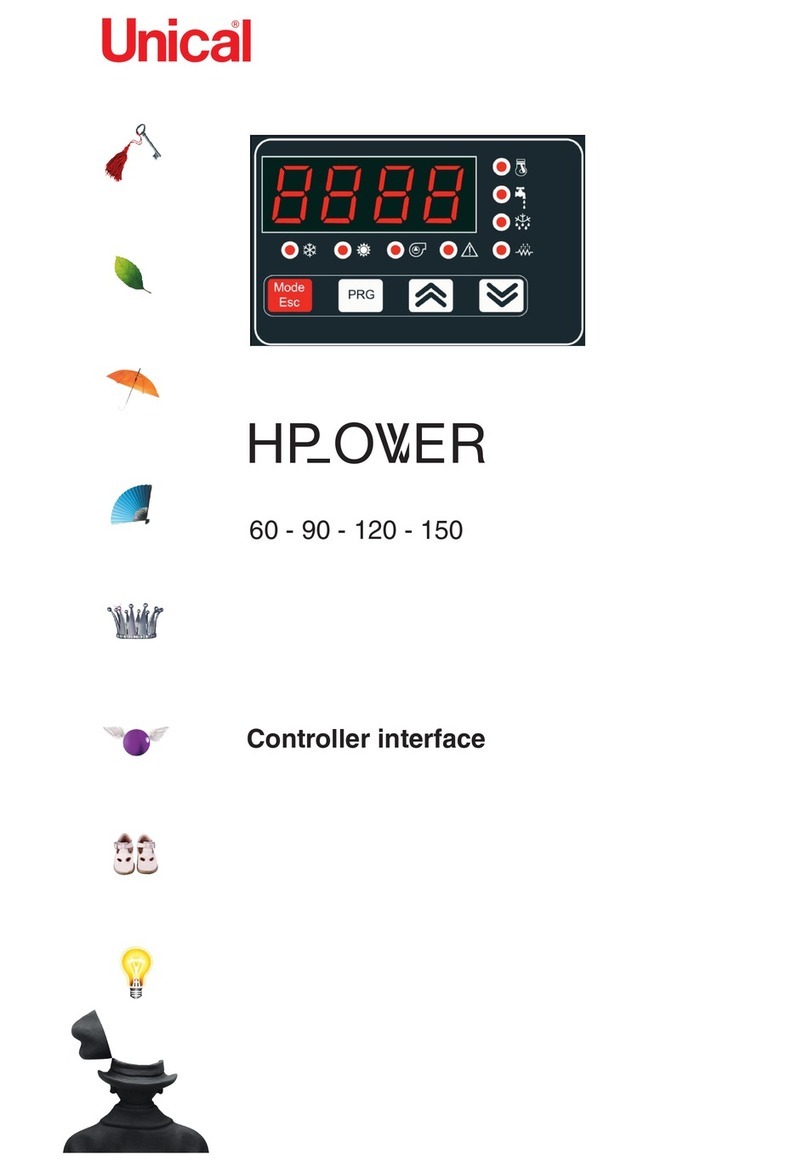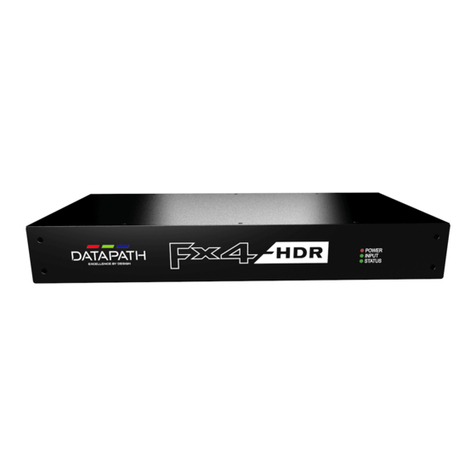
All rights reserved. Reproduction as well as electronic duplication of this user guide, complete or in part, requires the written consent of
ESERA GmbH. Errors and technical modification subject to change. ESERA GmbH, ESERA-Automation 2020
www.esera.de 11355 V2.0 R1.0 Manual Page 4 of 5
9 Reflections in 1-Wire networks
Each junction in a bus system causes an impedance mismatch at the junction. In addition, unwanted reflections
are generated at the ends of a branch or also at the end, which can falsify or partially erase the useful signal. The
longer a branch is, the more the mismatches and reflections appear. From this point of view, the star topology
does not perform well. The different strands form branches with strong mismatching, which influence each other
unfavorably.
The star topology or tree topology is by far the most frequently used in practice, but requires more attention
and care during installation and commissioning. Here the use of correct cable connectors, patch panels and
termination (1-Wire Term 1) is very important.
The preferred topology is the linear topology, since almost no reflections occur at branch lengths of less than
3 m. The highest reliability is achieved with this topology. In practice, however, it is the most difficult and costly
installation to implement. Here, too, termination must be provided at the end of the cable.
The branch topology occupies an intermediate position. Reflections can already be expected here. However,
these do not necessarily have to be disturbing, especially if the length is not too long. In small networks with a
total length of less than 50 m, the choice of the correct topology is not so critical.
All network topologies have in common that the line ends should be terminated. Here the ESERA 1-Wire Term 1
module is a very good and practical solution.
10 Operating conditions
The module may only be operated at the specified voltages and ambient conditions. The device can be operated
in any position. The device is intended for use in dry and dust-free rooms. If condensation is formed, allow at least
2 hours for the unit to acclimatize. Do not operate the module in an environment in which flammable gases,
vapors or dusts are present or could be present.
11 Disposal instructions
Do not dispose of the device in domestic waste! Electronic devices must be disposed of at
the local collection points for electronic waste in accordance with the Directive on Waste
Electrical and Electronic Equipment!
12 Safety instructions
When using products that come into contact with electrical voltage, the valid VDE regulations must be
observed, especially VDE 0100, VDE 0550/0551, VDE 0700, VDE 0711 and VDE 0860
All final or wiring work must be carried out with the power turned off.
Before opening the device, always unplug or make sure that the unit is disconnected from the mains.
Components, modules or devices may only be put into service if they are mounted in a contact proof housing.
During installation they must not have power applied.
Tools may only be used on devices, components or assemblies when it is certain that the devices are disconnected
from the power supply and electrical charges stored in the components inside the device have been discharged.
Live cables or wires to which the device or an assembly is connected, must always be tested for insulation faults or
breaks.
If an error is detected in the supply line, the device must be immediately taken out of operation until the faulty cable
has been replaced.
When using components or modules it is absolutely necessary to comply with the requirements set out in the
accompanying description specifications for electrical quantities.
If the available description is not clear to the non-commercial end-user what the applicable electrical characteristics
for a part or assembly are, how to connect an external circuit, which external components or additional devices can
be connected or which values these external components may have, a qualified electrician must be consulted.
It must be examined generally before the commissioning of a device, whether this device or module is basically
suitable for the application in which it is to be used.
In case of doubt, consultation with experts or the manufacturer of the components used is absolutely necessary.
For operational and connection errors outside of our control, we assume no liability of any kind for any resulting
damage.
Kits should be returned without their housing when not functional with an exact error description and the
accompanying instructions. Without an error description it is not possible to repair. For time-consuming assembly or
disassembly of cases charges will be invoiced.
During installation and handling of components which later have mains potential on their parts, the relevant VDE
regulations must be observed.
Devices that are to be operated at a voltage greater than 35 VDC / 12mA, may only be connected by a qualified
electrician and put into operation.
Commissioning may only be realized if the circuit is built into a contact proof housing.





